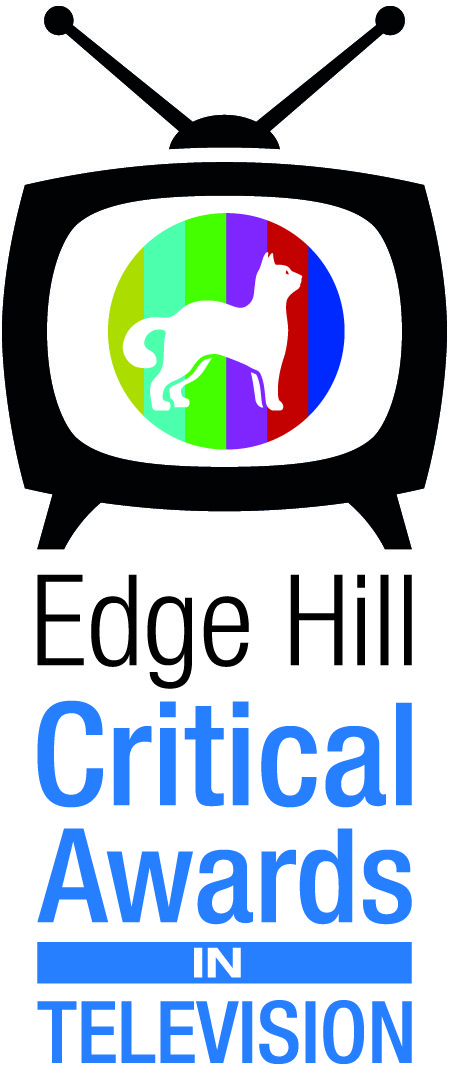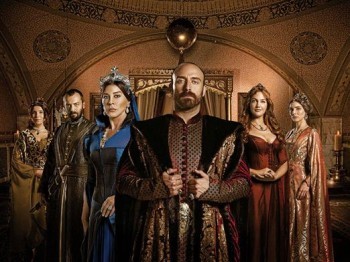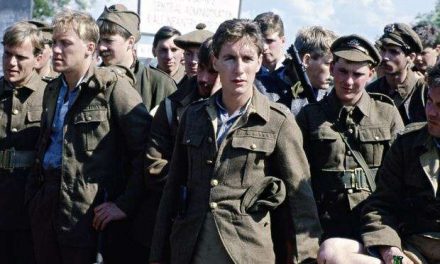I have finally watched Hannibal (NBC, 2013-2015). I binged it in less than a week. If you think that is a good sign, think again. I just wanted to get past it. There was no savouring going on or getting addicted. No. On the contrary: I wanted to finish it as quickly as possible.
I thought the programme was utterly – and excuse my lack of a better technical term – naff. Gosh, I could see (and hear) that it wanted me to admire it: the production design was lush, the sound design impressive. There were constant references to high art, particularly through the sound design, but obviously also through the stories themselves, specifically the episodes on the Red Dragon, part of season three. But the framing of shots when Hannibal Lecter (Mads Mikkelsen) is cooking and serving his ‘food’ similarly points to the high art of (extremely) fine dining. As David L. Palatinus described it, the show created a spectacle of connoisseurship, absolutising taste (personal communication, 2021). The story design itself borrowed heavily from the Avant Garde and American Independent Film, with constant associative editing that gave us the vision of how characters saw the represented moments. As an experience, this was clearly meant to confuse the spectator so that they would recognise their own subjective positioning, as well as gaining an insight into characters. There were all the big themes: good versus evil, beauty versus the grotesque, god versus devil, human versus monster, and in all of them, the suggestion that these things sit very closely together (‘look how ambiguous we are! So clever!’). And then there was the lighting design (in some cases I wasn’t sure if my screen had gone black or not…), the constant use of slow motion and the actors’ deliberate attempts at speaking the lines with meaning. Hugh Dancy, who plays Will Graham, suggested that was the beauty of doing Hannibal: many of the scenes were just two characters sitting opposite of each other, ‘knocking Brian [Fuller’s] dialogue back and forth’.
To be fair, Dancy is the primary actor who seems to think this was good. The rest of the cast seem to take the programme with a few grains or pinches of salt as their interviews in the same official series of Hannibal Post Mortem suggest:
Unfortunately, all of these stylistic flourishes just made me roll my eyes a lot. It felt too steeped in empty middle-class and patriarchal-masculine clichés. But then, the final scene made me laugh out loud. The ridiculousness of the blood bath, which ends with the Dragon, Francis Dolarhyde (Richard Armitage), getting wings as his own blood spreads around him and Lecter and Graham embracing and jumping off a crumbling cliff, seemed to show off the joke. So was the programme largely a parody? Was it a joke? Or was the show jumping the shark, rendering extreme its tendency to the ridiculous as it approached the final?
To be honest, I don’t care enough. But what did strike me was how many people were gushing about the show when it was on. So I looked up how many awards it won. According to the IMDB it won 20. Most of them went to actors, in particular to Armitage and Mikkelsen who both won 3. It won one for editing, but otherwise the skill of the production team wasn’t recognised. User reviews praise it as ‘a work of art’ (yeah, because it cites middle-class art a lot) and because it’s ‘deep’ (eye roll). Compare that to how many awards a good life-style programme has won. The seminal Changing Rooms (BBC, 1996-2004) has won two awards. The ever-gorgeous Gardeners’ World (BBC, since 1968) apparently none. A personal favourite of mine, the reality-lifestyle combination Your Home Made Perfect (BBC, 2019-present) also won none so far. This is despite the fact that the show self-referentially highlights that its (and its genre’s) appeal lies not so much with the spectacle of the make-over (though that is also nice), but with the revelation of human connection between the clients and the architects (and thus to us). Now, to me, that is deep. Similarly, quiz shows are often overlooked by awards so that even a programme such as the phenomenally successful Who Wants to Be a Millionaire (ITV, 1998-present), which has won an impressive 17 awards over its long run, loses out in comparison to a 39-episode programme such as Hannibal.
I asked some of my ‘blood and guts’ friends, who had done their PhD, like me, about the viscerality of the image in crime drama, what they thought about it: Sofia Bull described a love derived from a teenage fascination with the book that combined with a good pinch of humour, while David L. Palatinus who has written intelligently about the programme for the CST blogs before (‘The Spectres of Crime’, 2014) indicated a similar sense of discomfort to mine.
But what struck me is the disconnect between our evaluation and that of the general public, including the industry. Awards tend to value middle-class, white, masculine tastes and use categories derived from film that are often not reflective of the wide diversity of skills and creative abilities in television. As we all know, television with its variety of genres also requires different hierarches and different skillsets that do not always fit into the schemata provided by film awards which tend to be constructed around fiction film. When film and television awards celebrate productions other than fiction, they are based around genres (best entertainment programme, best performance in a soap opera, etc.). In addition, awards over-emphasise above-the-line production personnel and thereby do nothing to challenge the value hierarchies of our culture. What is valued is that which is already powerful.
This is disappointing to say the least. As we know (Newman and Levine, 2012), television itself bears the brunt of these value hierarchies. Associated with the domestic, it is often perceived to belong to the feminine. Thought of as a mass medium, it has often been classed as working-class. The latter means that audiences are often perceived to be as ‘vulnerable to influence’ as women and children – despite all the excellent work done on audiences that contradicts these ideas (e.g. Morley, 1980; Brown, 1994). All the while television’s above-the-line production personnel remain largely middle-class and male and obviously white. And the industry has responded by primarily embracing the relatively high-art conventions of film or literature (Thompson, 1997) or indeed by creating cultural kudos by producing and exhibiting film, as Hannah Andrews (2014) has shown. And it has engaged the middle-class audience by catering to their tastes as many theorists have argued (Feuer, 1984; Thompson, 1997). While we critique this tendency, we haven’t yet managed to offer alternatives, despite the wide variety of scholarship that emphasises skills and appreciates stylistic choices in all areas of television production.
Offering an alternative is what a new set of awards attempts to do. Critical Studies in Television, in collaboration with the Television Studies Research Group at Edge Hill University, the Production Guild and the Institute for Social Responsibility, have developed a new set of awards: the Critical Awards in Television (CATS). We want to celebrate television within the value system that matters to us, the television academy. This will be a different intervention: one that allows us to showcase what we value, and that will hopefully mean a development away from the traditional hierarchies of taste which we disparage of so often.
This year, what matters to us (and, judging from viewing figures, to the public) was that television kept going. So this year’s four categories are all related to Covid: television that gave us comfort during the pandemic, television that cleverly thought about health and safety during the crisis, and television that was written or production designed creatively in order to tell its stories in Covid-safe ways. In addition, we want to celebrate the up-and-coming television makers, and are privileged to have the help of the Production Guild for this: they will judge an award of student productions that worked creatively with the Covid restrictions. Due to where we are based, we can this year only consider British productions. But as members of the public, as producers and as teachers, I invite all of you to nominate the productions that you thought did particularly well in any of the above regards.
To find out more and to nominate your favourite productions, please visit the Award Webpages.
Elke Weissmann is Reader in Film and Television at Edge Hill University. She is currently considering changing this to Reader in Television and Film, however. Her books include Transnational Television Drama (Palgrave) and the edited collection Renewing Feminisms (I.B.Tauris) with Helen Thornham. She sits on the board of editors for Critical Studies in Television. She migrated to the UK in 2002 after realising that German television was as bad as she remembered.







